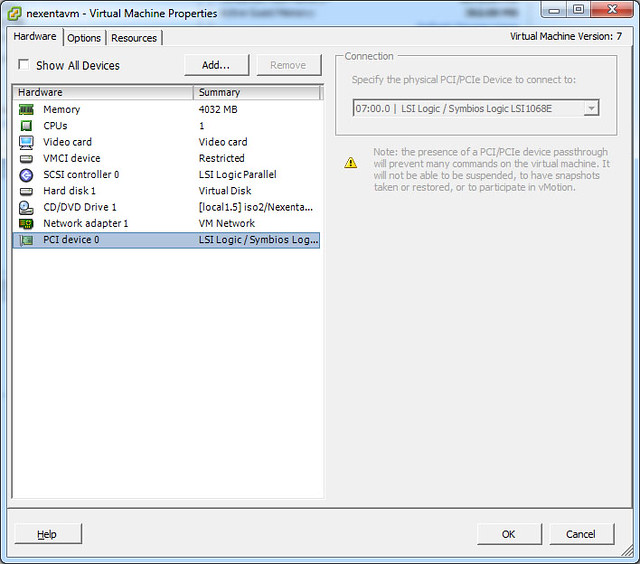LogicWater
n00b
- Joined
- Nov 5, 2010
- Messages
- 14
Hey all!
I just got a new system (1090T + GA-890FXA-UD5 +8GB ram +2x1TB + 6x 2TB EARS) and the primary purpose of this system is to be a ZFS filesystem and secondary hosting a few VMs.
People on various HF threads mentioned using FreeNAS, FreeBSD or OpenSolaris. The idea is to install the main OS on either a usb stick or a PATA HDD. Then 2x1TB used for VMs and the 6x 2TB EARS for media files. What would be a goood choice for the ZFS OS (6x2TB EARS)?
Would it possible to use VirtualBox on the above OS and install ESXi 4.1; create the VMs in ESXi and connect them to the original 2x1TB HDD on the main OS using iSCSI?
I just got a new system (1090T + GA-890FXA-UD5 +8GB ram +2x1TB + 6x 2TB EARS) and the primary purpose of this system is to be a ZFS filesystem and secondary hosting a few VMs.
People on various HF threads mentioned using FreeNAS, FreeBSD or OpenSolaris. The idea is to install the main OS on either a usb stick or a PATA HDD. Then 2x1TB used for VMs and the 6x 2TB EARS for media files. What would be a goood choice for the ZFS OS (6x2TB EARS)?
Would it possible to use VirtualBox on the above OS and install ESXi 4.1; create the VMs in ESXi and connect them to the original 2x1TB HDD on the main OS using iSCSI?
![[H]ard|Forum](/styles/hardforum/xenforo/logo_dark.png)

